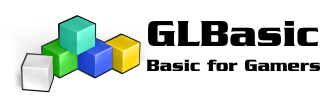I've always wondered how some apps get ridiculous amounts of user ratings, but now I think I know how they do it:
Reward the player with in-game tokens for bringing out a rating.
Yesterday I came across a free iOS game Move The Box. It's an okay but pretty unremarkable game. However, I saw it has more than 10.000 user ratings in the Dutch appstore alone. I checked the US appstore (open iTunes, change language in bottom right) and there it's got almost 300.000 user ratings! This is amazing because its initial v1.0 release was only last january.
This is amazing because its initial v1.0 release was only last january.
The game is like a simpler version of Puzznic and you can buy hints as in-app purchases; a 4 hints pack for $1 or a 12 hints pack for $2. Or, and this is how they do it, you can get 5 free hints for rating the game. The only other way to get hints is by spending money, so this really reinforces the feeling of getting someting for free. Btw it's a very simple implementation because the app doesn't even check if you actually give a rating. You get the free hints just for clicking the "rate this game" button, but apparently that's good enough. This tactic seems to be working on the Android market as well.
What do you think of this, manipulative or pure genius?
Reward the player with in-game tokens for bringing out a rating.
Yesterday I came across a free iOS game Move The Box. It's an okay but pretty unremarkable game. However, I saw it has more than 10.000 user ratings in the Dutch appstore alone. I checked the US appstore (open iTunes, change language in bottom right) and there it's got almost 300.000 user ratings!
 This is amazing because its initial v1.0 release was only last january.
This is amazing because its initial v1.0 release was only last january.The game is like a simpler version of Puzznic and you can buy hints as in-app purchases; a 4 hints pack for $1 or a 12 hints pack for $2. Or, and this is how they do it, you can get 5 free hints for rating the game. The only other way to get hints is by spending money, so this really reinforces the feeling of getting someting for free. Btw it's a very simple implementation because the app doesn't even check if you actually give a rating. You get the free hints just for clicking the "rate this game" button, but apparently that's good enough. This tactic seems to be working on the Android market as well.
What do you think of this, manipulative or pure genius?


 Anyone?
Anyone?
 see attachment for files.
see attachment for files.
 It's based on a freeware game of mine from 2005 with the same name. I first started out in objective-c, but after 5 months of struggling I could only barely move some UImageViews around the screen. Then I found out that GLBasic added iphone support so I switched (better late than never). The beautiful graphics were created by Amblagar Studio from Argentina, contacted via
It's based on a freeware game of mine from 2005 with the same name. I first started out in objective-c, but after 5 months of struggling I could only barely move some UImageViews around the screen. Then I found out that GLBasic added iphone support so I switched (better late than never). The beautiful graphics were created by Amblagar Studio from Argentina, contacted via 




 The app loads some stuff into memory at startup, not much but enough to keep the user waiting shortly. I already added a "Default.png" image, the iOS shows this before loading the app, but while it is loading the screen is black. So when my app starts, the user sees this: the Default.png image (1 sec.), black screen (1 sec.), title screen (start of program).
The app loads some stuff into memory at startup, not much but enough to keep the user waiting shortly. I already added a "Default.png" image, the iOS shows this before loading the app, but while it is loading the screen is black. So when my app starts, the user sees this: the Default.png image (1 sec.), black screen (1 sec.), title screen (start of program).
 i'm off to bed..
i'm off to bed..

 (mp3 on desktop and default search text etc.)
(mp3 on desktop and default search text etc.)
 (not just this game btw, other games are still underway)
(not just this game btw, other games are still underway)
 thank you, yes I wrote this fantastic piece of sofware
thank you, yes I wrote this fantastic piece of sofware 